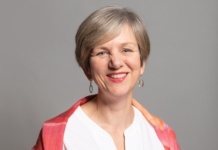Malaysia has achieved one of the highest levels of financial inclusion among Southeast Asia countries, due in part to policies taking advantage of mobile phones and banking agents to expand access, according to a recent World Bank report discussed at a conference on Thursday.

A major contributor to Malaysia’s development success is its innovative, resilient, and inclusive financial sector, according to World Bank specialists, speaking at the launch of the Global Findex 2014, a comprehensive report on financial inclusion released by the World Bank every three years. It measures how individuals in 143 countries save, borrow, make payments, and manage risks, and found Malaysia’s financial inclusion at 81 percent.
“Technology can play a powerful role in bringing people into banking systems, and lifting them out of poverty,” said Ulrich Zachau, the World Bank’s Country Director for South East Asia. “Malaysia’s success in financial inclusion is a model for developing countries around the world.”
Malaysia, Singapore and Thailand lead ASEAN inclusion rates, with about four of five adults benefiting from access to financial services and able to save, borrow and manage risk, according to Global Findex 2014. From 2011 to 2014, account ownership for adults of the poorest 40 percent of households in Malaysia increased 26 percent from 50 percent to 76 percent.
In the same time period, 700 million people across the globe became account holders at banks, other financial institutions or mobile money service providers, and the number of “unbanked” individuals dropped 20 percent to two billion adults, the report said.
Globally, the report found that the percentage of adults with an account increased from 51 percent to 62 percent, a trend driven by a 13-percentage-point rise in account ownership in developing countries as well as improved technology. In particular, mobile money accounts in developing countries are helping to rapidly expand and scale up access to financial services.
The report also found a need to expand financial inclusion among women and the poorest households. More than half of adults in the poorest 40 percent of households in developing countries lacked accounts in 2014.
In addition, the gender gap in account ownership remained relatively unchanged. In 2011, 47 percent of women and 54 percent of men had an account; in 2014, 58 percent of women had an account, compared to 65 percent of men. Regionally, the gender gap is largest in South Asia, where 37 percent of women have an account compared to 55 percent of men.










